Tai Culture 



Poi Sang Long ปอยส่างลอง
ပွႆးသၢင်ႇလွင်း
The Poi Sang Long (Tai: "Festival [of the] jewel sons or Crystal Sons ") is a rite of passage ceremony among the Tai(Shan) peoples, in Shan State Myanmar (Burma) and in neighbouring Northern Thailand, undergone by boys at some point between seven and fourteen years of age. It consists of taking novice monastic vows and participating in monastery life for a period of time that can vary from a week to many months or more. Usually, a large group of boys are ordained as novice monks at the same time.
The origins of this festival lie in Buddhist legend. It is believed that the tradition is probably following in the footsteps of Prince Rahula, the Buddha's own son, who gave up his worldly life to follow his father's spiritual teachings. Prince Rahula became the youngest ordained monk and the first novice in Buddhism. Subsequently it became a tradition that young boys should ordain to learn Buddhist teachings.
With such high reverence to the Buddhist religion, the Tai (Shan) people consider that the celebrations should be as grand as possible.
The festival lasts for three days. On the first day, the boys have their heads shaved. Then, they are bathed and anointed with special waters and dressed up elegantly and colorfully while their faces are superbly embellished. By this time, the boys are known locally as 'Sang Long'(saaN-lON) or 'Look Kaew'(luk-keu) (jewel sons).
On the second day, a colorful procession is held displaying offerings for the monks. On the third day, the procession once again proceeds through the town and the boys are taken to the temples for the formal ordination ceremony.
Poi Sang Long is held early in the hot season (in late March or early April) all over Shan State, Mae Hong Son, Chiang Mai and Chiang Rai as well as in other Shan communities of the northern Thailand.
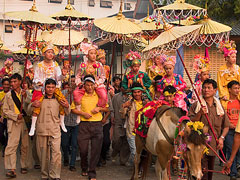 |
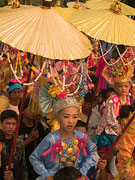 |
| Parade of novice monks, Sang Long Festival, Thailand | |
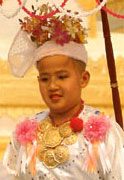 |
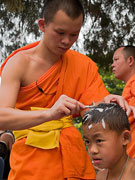 |
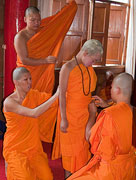 |
| Young monk to be in ornate costume | Monk to be gets shaved | Novice monks get their new robes |